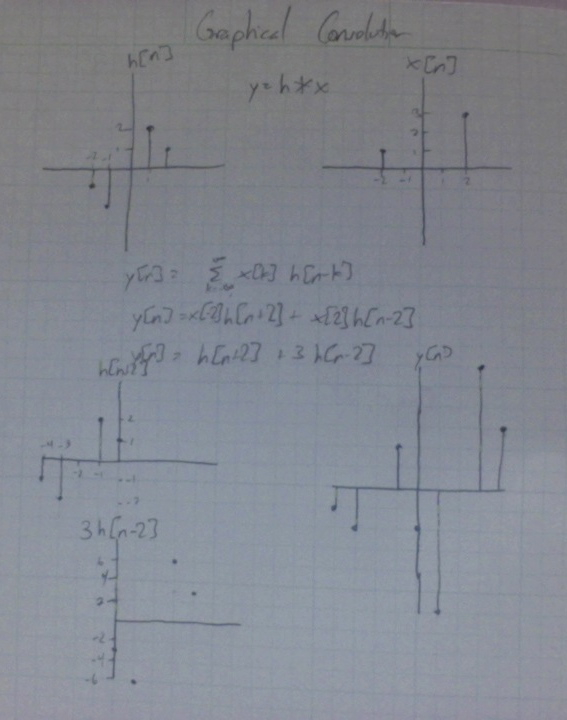(New page: Category:ECE301Spring2013JVK Category:ECE Category:ECE301 Category:probability Category:problem solving 1. Category:LTI systems Linear: <math>y[n]=x[n]+3x[n-1]</m...) |
|||
| Line 1: | Line 1: | ||
[[Category:ECE301Spring2013JVK]] [[Category:ECE]] [[Category:ECE301]] [[Category:probability]] [[Category:problem solving]] | [[Category:ECE301Spring2013JVK]] [[Category:ECE]] [[Category:ECE301]] [[Category:probability]] [[Category:problem solving]] | ||
| − | 1. [[Category:LTI systems]] | + | 1. [[Category:LTI systems]] |
Linear: <math>y[n]=x[n]+3x[n-1]</math> | Linear: <math>y[n]=x[n]+3x[n-1]</math> | ||
| Line 22: | Line 22: | ||
2. [[Category:convolution]] | 2. [[Category:convolution]] | ||
| + | |||
[[Image:Graphical_Convolution.jpg]] | [[Image:Graphical_Convolution.jpg]] | ||
| + | |||
3. [[Category:period]] | 3. [[Category:period]] | ||
<math>y(t)=cos(4t)</math> | <math>y(t)=cos(4t)</math> | ||
Revision as of 11:49, 11 February 2013
1.
Linear: $ y[n]=x[n]+3x[n-1] $ Non Linear: $ y[n]=x[n]^2+x[n] $
Causal: $ y[t]=(1/3)x[t] $ Non Causal: $ y[n]=x[n+5]+x[n-2] $
With Memory: $ y[n]=x[n-1]^2 $ Without Memory: $ y[n]=sin(x[n]) $
Invertible: $ y[t]=16x[t] $ Non Invertible: $ y[t]=|x[t]| $
Stable: $ y[n]=x[n^2]+x[n-1] $ Unstable: $ y[n]=n!x[n] $
Time Variant: $ y[n]=x[n]/(n^2+1) $ Time Invariant: $ y[n]=x[n-2]^3 $
3. $ y(t)=cos(4t) $ The period is $ pi/2 $


